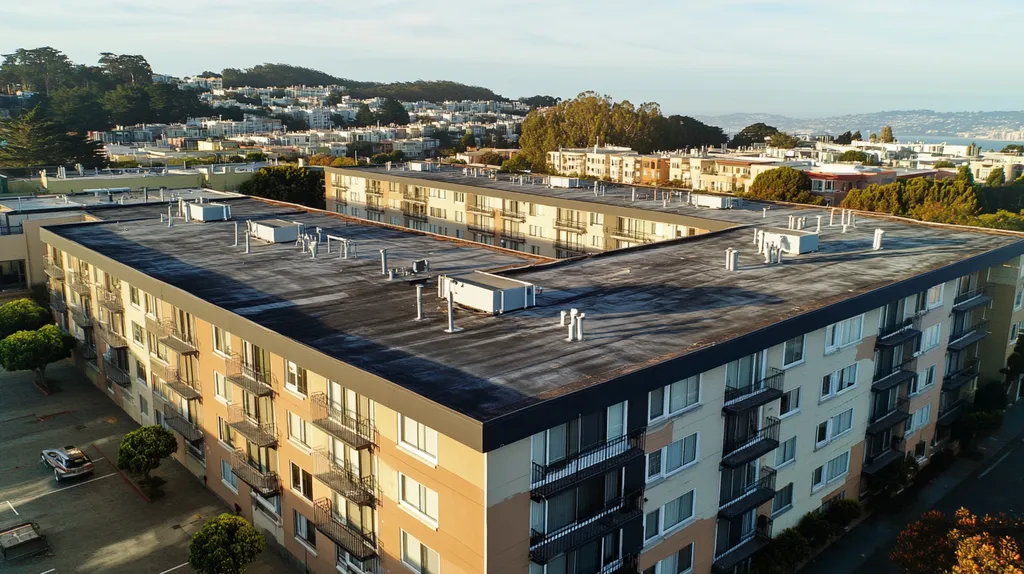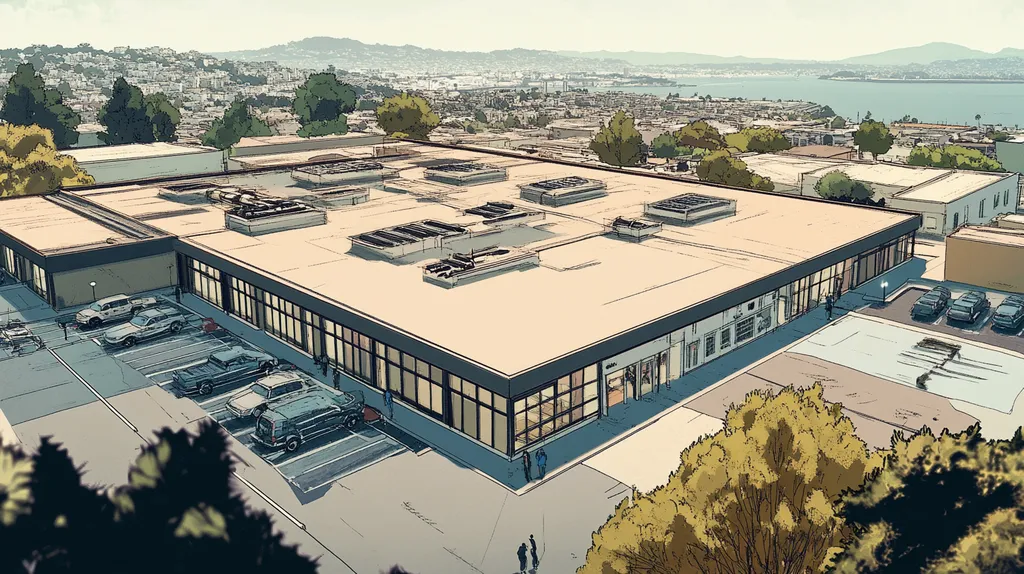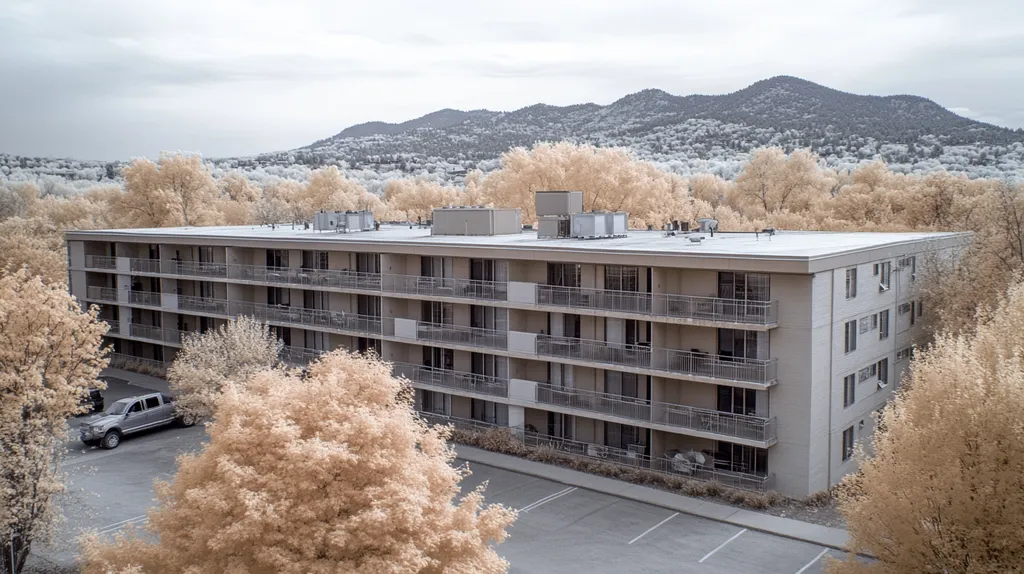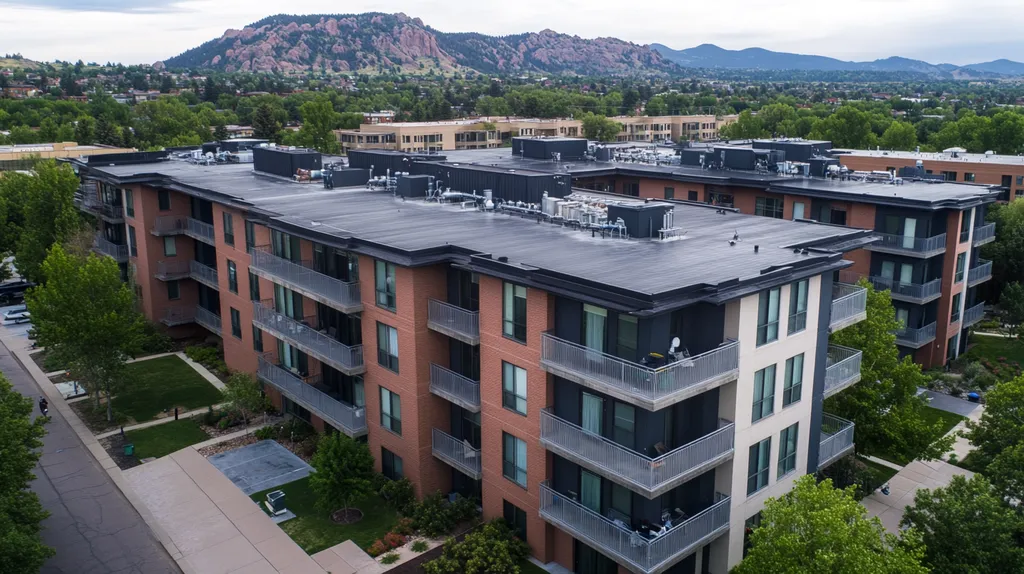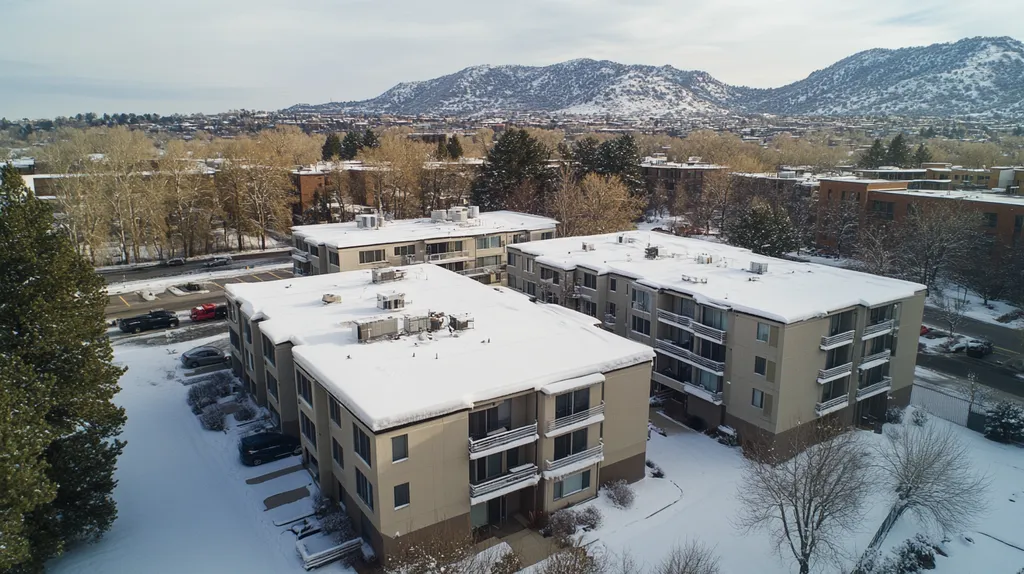Welcome to today’s Battle Royale featuring two roofing heavyweights: “Historic Color Palette” in the east corner versus “Contemporary Color Palette” in the west!
Tonight’s showdown pits these contenders against each other across six punishing rounds designed to test every aspect of their performance for Commercial Roof Design.
At stake? Millions in potential costs, decades of building protection, and the critical performance demands of modern commercial and industrial facilities.
Our professional judging panel will evaluate each round on technical merit, real-world performance, and value delivery. After all six rounds, we’ll declare our ultimate champion.
Ladies and gentlemen, facility managers and building owners… it’s time to rumble!
ROUND 1: INITIAL COSTS & INSTALLATION
In today’s competitive commercial real estate market, the decision between historic and contemporary roof color palettes carries significant financial weight. While historic authenticity can enhance property value, contemporary options often promise cost savings. This critical choice impacts not just aesthetics, but also installation complexity, material availability, and project timelines.
Material Expenses
During the Second Empire period (1855-1885), commercial buildings predominantly featured neutral colors like grays, tans, and warm beiges, with later trends moving toward deeper tones such as russets and olives. These historically accurate materials often required specialized manufacturing processes. (source: Historic Ipswich)
Today’s historic color palette materials typically demand premium prices due to specialized manufacturing and limited availability. Natural slate, clay tiles, and custom-mixed color compounds can cost 30-50% more than standard commercial roofing materials.
Contemporary palette materials benefit from modern manufacturing efficiency and wider availability. These materials often incorporate advanced coating technologies that provide excellent color retention while keeping costs manageable.
In the material expenses category, the contemporary color palette claims the “ADVANTAGE” through better availability and lower production costs.
Installation Complexity
Historic color palettes often require specialized installation techniques to maintain period authenticity. These methods demand skilled craftsmen familiar with traditional roofing practices, significantly impacting labor costs.
The installation process for historic colors frequently involves multiple layers and careful color matching across different material batches. This attention to detail helps preserve architectural integrity but extends project timelines.
Contemporary color options typically feature standardized installation processes designed for efficiency. Modern materials often come with integrated fastening systems and precise color matching across manufacturing runs.
For installation complexity, the contemporary color palette shows clear “ADVANTAGE” through streamlined processes and reduced labor requirements.
Project Timeline
Timeline considerations for historic color palettes start with material procurement. Special-order materials and custom color matching can add weeks or months to project schedules.
Installation of historic color schemes requires careful planning and execution to ensure proper color placement and historical accuracy. Weather delays can particularly impact these more complex installations.
Contemporary color installations benefit from readily available materials and faster installation methods. Most modern roofing systems are designed for quick deployment while maintaining quality standards.
The contemporary color palette earns another “ADVANTAGE” for significantly shorter project timelines.
ROUND 1 WINNER: Contemporary Color Palette
ROUND 2: DURABILITY & LIFESPAN
When it comes to commercial roofing, durability isn’t just about lasting longer – it’s about protecting millions in property value and business operations. A roof’s color palette plays a surprisingly crucial role in its longevity, affecting everything from heat absorption to material degradation. Making the wrong choice can cut a roof’s lifespan by up to 40% and dramatically increase maintenance costs.
Impact on Energy Efficiency
The relationship between roof color and energy efficiency directly impacts long-term durability. Darker colors absorb up to 90% of solar energy, while lighter colors can reflect up to 80% of heat away from the building.
Historic color palettes typically feature darker earth tones that were chosen for their ability to hide dirt and complement period architecture. These traditional colors can accelerate material breakdown through increased thermal cycling and UV exposure.
Contemporary color selections often incorporate cool-roof technology with highly reflective pigments. These advanced materials maintain lower surface temperatures, reducing thermal stress and extending material lifespan.
For energy efficiency impact, the contemporary color palette claims a clear “ADVANTAGE” through superior heat management capabilities.
Resistance to Weathering
A roof’s ability to withstand weather extremes determines its ultimate lifespan. UV radiation, moisture penetration, and freeze-thaw cycles all contribute to material degradation over time.
The Federal Period (1780-1830) established a preference for lighter colors like white, off-white, and pale stony grays in commercial architecture. These historically accurate shades actually showed impressive natural weather resistance. (source: Historic Ipswich)
Modern color palettes incorporate advanced UV-resistant pigments and protective coatings. These technologies provide superior defense against weathering while maintaining color stability.
When it comes to weather resistance, both options demonstrate strong performance, resulting in a “TIE” for this category.
Maintenance Requirements
Regular maintenance extends roof life and prevents costly emergency repairs. The chosen color palette significantly impacts maintenance frequency and complexity.
Historic color schemes often require more frequent touching up to maintain period-appropriate appearance. Their traditional pigments may fade unevenly, demanding careful color matching during repairs.
Contemporary color systems feature self-cleaning surfaces and fade-resistant technologies. These innovations reduce maintenance needs while ensuring consistent appearance over time.
For maintenance considerations, the contemporary color palette earns another “ADVANTAGE” through reduced upkeep requirements.
ROUND 2 WINNER: Contemporary Color Palette
ROUND 3: PERFORMANCE FACTORS
When selecting a commercial roof color palette, performance factors can make the difference between a 15-year and 50-year lifespan. Color choices impact everything from daily energy costs to long-term maintenance requirements. Making uninformed decisions about roofing colors can lead to premature aging, increased operational expenses, and diminished property value.
Energy Efficiency
The color of a commercial roof directly influences building temperature and energy consumption. Light-colored roofs can reflect up to 80% of solar radiation, while dark roofs may absorb up to 90% of heat energy.
Historic color palettes often feature darker earth tones that were chosen for their ability to mask dirt and complement period architecture. These traditional colors typically result in higher cooling costs and increased thermal stress on roofing materials.
Contemporary color options leverage advanced reflective technologies and cool-roof pigments. These modern materials maintain lower surface temperatures even in intense sunlight, reducing air conditioning demands and energy bills.
For energy efficiency, the contemporary color palette claims a clear “ADVANTAGE” through superior heat management.
Durability and Maintenance
DaVinci Roofscapes demonstrates how modern manufacturing can blend historic appeal with contemporary performance, offering synthetic slate and shake roofing that comes with a 50-year warranty while being virtually maintenance-free. (source: A Concord Carpenter)
Historic color palettes often require specialized maintenance to preserve their authentic appearance. Traditional materials may fade unevenly and demand frequent touch-ups to maintain consistent coloring.
Contemporary color systems incorporate advanced UV-resistant pigments and protective coatings. These innovations significantly reduce maintenance requirements while ensuring consistent appearance over time.
In durability and maintenance, the contemporary color palette earns another “ADVANTAGE” through reduced upkeep needs and longer material lifespan.
Impact on Property Value
A commercial roof’s color palette can significantly influence property valuation and marketability. The wrong color choice can reduce property value by up to 15% through poor curb appeal or increased operational costs.
Historic color palettes often enhance architectural authenticity and appeal to preservation-minded buyers. These traditional colors can contribute to a building’s character and historical significance.
Contemporary color options typically align with modern market preferences and energy efficiency standards. However, they may detract from the historical value of certain properties.
For property value impact, both options demonstrate distinct advantages, resulting in a “TIE” for this category.
ROUND 3 WINNER: Contemporary Color Palette
ROUND 4: MAINTENANCE REQUIREMENTS
Maintenance requirements can make or break a commercial roofing investment, with color choices playing a pivotal role in long-term performance. The wrong color selection can lead to premature aging, increased repair frequency, and skyrocketing energy costs. Understanding how different color palettes impact maintenance needs helps property owners make informed decisions that protect their investment for decades to come.
Surface Degradation Resistance
Surface degradation directly impacts maintenance frequency and costs. UV radiation, temperature fluctuations, and environmental pollutants all contribute to color fading and material breakdown over time.
Historic color palettes often rely on natural pigments and traditional materials that may show visible wear more quickly. These materials typically require more frequent cleaning and touch-ups to maintain their authentic appearance.
Contemporary color systems incorporate advanced UV-resistant pigments and protective coatings that actively resist fading and surface wear. These innovations significantly reduce the need for regular maintenance interventions.
For surface degradation resistance, the contemporary color palette claims the “ADVANTAGE” through superior material technology.
Climate Response and Adaptability
The choice of roofing color can significantly impact the overall appearance of a building and even affect its energy efficiency. Lighter roof colors can reflect up to 80% of solar radiation in warmer climates, while darker colors help absorb heat in colder regions. (source: RH Roofing)
Historic color palettes were developed before modern climate control systems existed. Their traditional dark colors often accelerate material aging through increased heat absorption and thermal stress.
Contemporary color options offer specialized coatings and reflective technologies that adapt to local climate conditions. These advanced materials help regulate temperature extremes and reduce maintenance needs.
In climate response and adaptability, the contemporary color palette earns another “ADVANTAGE” through better environmental performance.
Repair and Restoration Complexity
The complexity of repairs and restoration significantly impacts long-term maintenance costs. Simple repairs can become major projects if matching materials aren’t readily available.
Historic color palettes often require specialized materials and skilled craftsmen for repairs. Finding exact color matches for touch-ups and partial replacements can be particularly challenging.
Contemporary color systems feature standardized materials and readily available replacement components. Their modular nature allows for easier repairs and more consistent color matching.
For repair and restoration complexity, the contemporary color palette secures another “ADVANTAGE” through simplified maintenance procedures.
ROUND 4 WINNER: Contemporary Color Palette
ROUND 5: SUSTAINABILITY CREDENTIALS
As commercial buildings account for nearly 35% of total energy consumption in developed nations, choosing sustainable roofing solutions has become a critical business decision. The color palette of a commercial roof directly impacts its environmental footprint, from energy efficiency to material lifecycle. Making uninformed choices can result in excessive energy costs, regulatory penalties, and reduced property values.
Energy Efficiency and Heat Management
A roof’s color dramatically influences building temperature control and energy consumption. Light-colored surfaces can reflect up to 80% of solar radiation, while dark surfaces may absorb up to 90% of incoming heat.
Historic color palettes typically feature darker earth tones that were chosen for practical reasons in pre-air-conditioning eras. These traditional colors often result in significantly higher cooling costs and increased thermal stress on roofing materials.
Contemporary color options incorporate advanced cool-roof technologies and reflective pigments. These innovations maintain lower surface temperatures even during peak sun exposure, substantially reducing air conditioning demands.
For energy efficiency, the contemporary color palette claims a clear “ADVANTAGE” through superior heat management capabilities.
Material Lifecycle Impact
Evaluating choices for commercial roofing colors requires careful consideration of material sustainability. The selection impacts not just immediate environmental footprint but also long-term recyclability and waste management. (source: Buildings Guide)
Historic color palettes often rely on traditional materials that may have limited recycling potential. These materials can require resource-intensive manufacturing processes and may generate more waste during replacement.
Contemporary color systems frequently incorporate recycled content and are designed for end-of-life recyclability. Many modern materials feature modular designs that minimize installation waste and facilitate future material recovery.
In material lifecycle considerations, the contemporary color palette earns another “ADVANTAGE” through better sustainability metrics.
Environmental Compliance
Modern building codes increasingly emphasize environmental performance, with some jurisdictions mandating specific energy efficiency standards. Non-compliance can result in substantial fines and increased insurance premiums.
Historic color palettes may struggle to meet current environmental regulations without significant modifications. Their traditional compositions often fall short of modern sustainability requirements, potentially requiring expensive retrofits.
Contemporary color options are typically designed with current and anticipated environmental standards in mind. These materials often qualify for green building certifications and environmental incentives.
For environmental compliance, the contemporary color palette secures another “ADVANTAGE” through better regulatory alignment.
ROUND 5 WINNER: Contemporary Color Palette
ROUND 6: SPECIALIZED APPLICATIONS
In specialized commercial roofing applications, color choices can make or break a project’s success. Surface temperatures on dark-colored roofs can soar up to 90°F higher than ambient air, while light-colored surfaces stay within 15°F of atmospheric conditions. This dramatic difference impacts everything from cooling costs to material longevity, making color selection a critical factor in specialized commercial installations.
Material Performance Requirements
Specialized commercial applications often demand exceptional material performance to protect critical operations. Healthcare facilities, data centers, and food processing plants require roofing systems that maintain strict environmental controls while minimizing maintenance disruptions.
Historic color palettes typically rely on traditional materials that may struggle to meet these demanding performance requirements. Their natural pigments and traditional compositions often lack the advanced protective properties needed for specialized applications.
Contemporary color systems incorporate advanced materials specifically engineered for high-performance environments. DaVinci Roofscapes demonstrates this through synthetic slate and shake roofing that offers a 50-year warranty while remaining virtually maintenance-free. (source: A Concord Carpenter)
For material performance, the contemporary color palette claims a clear “ADVANTAGE” through superior engineering and durability.
Environmental Control Capabilities
Temperature regulation becomes critical in specialized applications where precise environmental control impacts operations. Even minor fluctuations can significantly affect energy costs and equipment performance.
Historic color selections often feature darker shades that absorb more solar radiation, making internal temperature control more challenging and expensive. These traditional colors can create hot spots and thermal stress points across the roof surface.
Contemporary color options utilize advanced reflective technologies to maintain more consistent surface temperatures. These modern materials help reduce thermal loading while providing better control over internal environments.
In environmental control capabilities, the contemporary color palette earns another “ADVANTAGE” through superior temperature management.
Application-Specific Requirements
Different commercial applications demand unique roofing solutions that balance aesthetics with functionality. Manufacturing facilities might prioritize chemical resistance, while retail spaces focus on visual appeal.
Historic color palettes can struggle to meet diverse application requirements while maintaining period authenticity. Their limited palette often forces compromises between appearance and functionality.
Contemporary color systems offer specialized solutions for specific applications without sacrificing performance. Their broader range of options allows better alignment between aesthetic goals and functional requirements.
For application-specific requirements, the contemporary color palette secures another “ADVANTAGE” through greater flexibility and customization options.
ROUND 6 WINNER: Contemporary Color Palette
AND THE WINNER IS…
After six grueling rounds of technical evaluation, we have our verdict. In a stunning display of modern innovation and performance superiority, the Contemporary Color Palette emerges as our undisputed champion!
The challenger dominated with consecutive victories across all six rounds, showcasing exceptional strength in energy efficiency, maintenance requirements, and sustainability credentials. Its advanced technologies and superior heat management capabilities delivered knockout performances that couldn’t be matched.
Yet don’t count the Historic Color Palette out completely. In buildings where architectural authenticity and period-specific aesthetics are paramount, particularly in designated historic districts, this veteran contender still packs a powerful punch.
Important Notice: Every commercial property brings unique requirements to the ring. Local climate conditions, building codes, and specific operational demands can all impact color palette performance. While this analysis provides general guidance, it cannot account for all variables. Property owners should always consult qualified roofing professionals who can evaluate their specific situation.
Ladies and gentlemen, in the high-stakes arena of commercial roofing, victory goes not to the flashiest contender, but to the solution that best matches your building’s specific needs. Choose your corner wisely!
FREQUENTLY ASKED QUESTIONS
Q. How does the commercial roof color affect installation costs?
A. The color of your roof can impact installation costs significantly. Historic color palettes often require specialized materials and techniques that can inflate labor costs and extend timelines. In contrast, contemporary palettes benefit from modern manufacturing and standardized processes, making them generally more cost-effective to install.
Q. What is the durability of contemporary vs. historic color palettes on industrial roofs?
A. Generally, contemporary color palettes offer superior durability against weathering and thermal stress compared to historic options. Advances in materials mean they resist fading and damage longer, maintaining performance while reducing maintenance interventions. Historic palettes, while appealing, may require more frequent upkeep to retain their appearance.
Q. How does the color choice impact energy efficiency for commercial roofs?
A. Color plays a crucial role in a roof’s energy efficiency. Lighter colors reflect solar radiation, significantly reducing cooling costs, while darker colors absorb heat, which can lead to higher energy bills. Selecting the right color can therefore enhance energy management in commercial buildings.
Q. What maintenance is needed for a commercial roof with historic colors?
A. Commercial roofs featuring historic colors typically demand more regular maintenance than contemporary options. The natural pigments often fade unevenly and require frequent touch-ups to maintain their period-appropriate appearance, leading to increased labor and material costs over time.
Q. How reliable are the sustainability credentials of commercial roofs?
A. The sustainability credentials of a commercial roof depend on the materials and technologies used. Contemporary roofs often utilize recyclable materials and advanced manufacturing processes, reducing their environmental impact. In contrast, historic roofs may not meet modern sustainability standards, potentially leading to increased operational costs and regulatory challenges.
Q. How does color affect specialized commercial roof applications?
A. In specialized applications such as healthcare or data centers, color choice can significantly impact operational efficiency. Dark roofs can absorb excessive heat, making temperature control harder, while lighter roofs help in maintaining optimal internal conditions. Selecting the right color is essential for maintaining critical environmental standards.
Q. What are the long-term effects of poor color choice for an industrial roof?
A. Poor color choices can lead to accelerated degradation of materials and increased cooling costs. An ill-informed selection may also necessitate more frequent repairs and ultimately shorten the roof’s lifespan, resulting in a costly replacement much sooner than anticipated. Therefore, careful consideration is critical.


